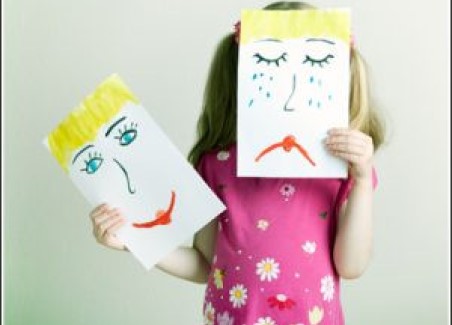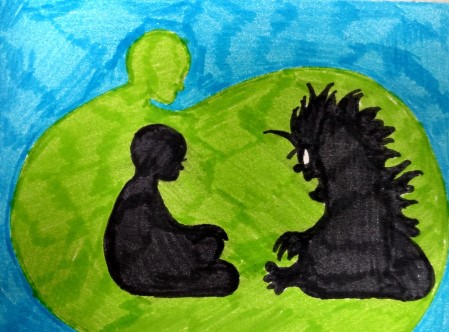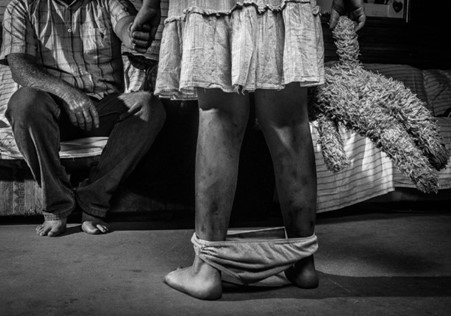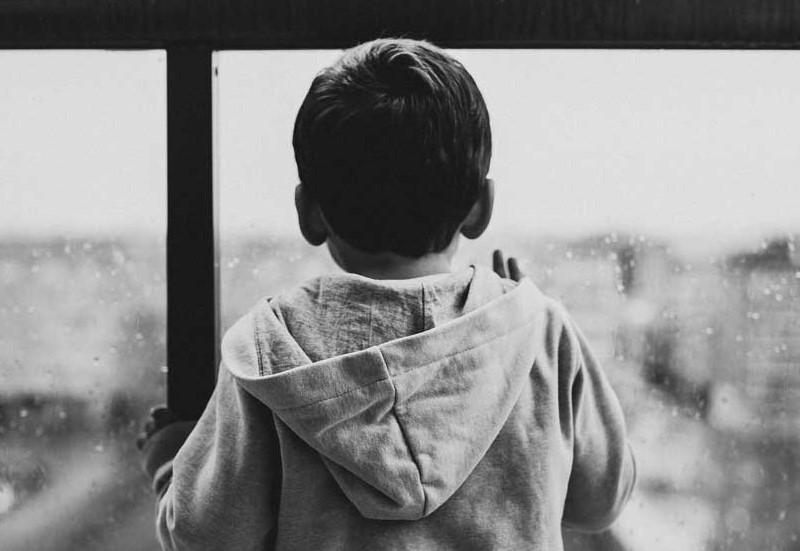The Post Traumatic Stress Disorder (PTSD) not exclusively diagnosed in adults, also affects pre-school children, infants and teens, as well.
An extremely shocking fact revealed by the statistics show that 5% of children and adolescents suffer from Post Traumatic Stress Disorder (PTSD).
- However, how a parent could be aware of the problem?
- Which is the most appropriate method of treatment?
- What is the attitude to be adopted of the family towards the affected child/adolescent?
All the above are important questions demanding a clear answer.
This article attempts to clarify the term “post-traumatic stress” and to set a number of limits on it, to become easier and faster for a parent to understand a relative episode.
First, we have to note the degree of importance and the need for a parent to have the adequate information, to identify a problem in minimum time and to deal with it properly, before it goes away.
Post Traumatic Stress Disorder (PTSD) and Minors

This specific disorder describes exposure to a deep and large trauma, per example, happening in adults and children, when faced with a severe shock, when experience physical / verbal / or even psychological violence, or when they experience an extreme and frightening event for them, then likely to develop Post-Traumatic Stress Disorder (PTSD).
Therefore, it is reasonable to consider this disorder as a special subcategory – to mental illness and disorders even in very young children (even children of preschool age in certain cases).
The severity of a mental disorder in children & adolescents is equal (if not greater) to that of adults.
- Nevertheless, why do we emphasize the great need for understanding the problem?
As a child, in many occasions, is not able to understand its own fears neither to face them, there is always a higher risk to embody them.
In case the parents do not pay the required attention to the event, there is a risk of deepening the problem, so creating “roots” and taking a chronic form of phobia and panic.
However, even prior to attributing any responsibilities to parents characterizing them as «irresponsible”, let us make it clear that it is not always easy to detect the seriousness of an incident.
- In any case, how it is possible to distinguish a simple childhood nightmare from the outcome of violence or abuse?
- Which are the evidence leading you to identify an abuse (of whatever form) and how will you recognize the “dangerous” nightmares or other similar episodes’, embodying your child’s stress and fear?
Trauma & Post-Traumatic Stress: The Context of a “Trauma” and its impact
It is not always easy, beyond obvious shocking and frightening episodes (death, violence, abuse, accident, natural disaster) for a parent to understand the source of a young child’s fear.
Most likely, a child manifests post-traumatic stress in an event where it was the “victim” or even in a violent event where it was simply an “observer”.
Adult world is often very scary and aggravating for the psychology of a young child.
In fact, it is common for children who suffered a certain kind of trauma to be affected in the end.
There are numerous examples drastically affecting the psychology of a child or adolescent.
Below we see some of the most common causes of post-traumatic stress disorder in young children and adolescents:
- physical abuse
- sexual abuse
- emotional abuse and bullying
- violent incident / crime
- serious accident
- natural disaster
- death of a loved person or serious illness
In general, any event activating a strong sense of terror, threat and helplessness may carry the characterization of a “trauma”, with physical / sexual / psychological abuse being one of the most common causes of mental disorders in a child or adolescent.

Statistics show the true picture of the society where we live. Every year in the United States, more than 1,000,000 children are victims of physical (or even sexual) abuse, an approximate number concerning only the USA and only the cases of physical abuse.
Another shocking fact is that in most cases of violence against children and adolescents relate to the family environment of the victim.
A specialist should evaluate a “trauma”, for treating a post-traumatic stress disorder (PTSD) in a proper way.
As the event itself (trauma) and the reaction of each victim of the violent event differ in each case, no general reference to specific symptoms or specific treatment are possible.
The way each person reacts to trauma ultimately determines the degree and progression of the disorder.
Note at this point that, the form that a Post Traumatic Stress Disorder (PTSD) takes in an adult and a child, may not be the same.
Therefore, even a parent and child being witnesses of the same traumatic event will embody this trauma in a different way, a fact often making diagnosis more difficult and complicated.
This is the reason for experts to recommend frequently an evaluation by a mental health professional as soon as someone in the child or adolescent’s environment sees “strange or unusual behaviors.”
Regarding the distinction on the manifestation of post-traumatic stress between adults and minors, it is worth mentioning that a fundamental difference is that – quite often – minors will express the terror experienced via a disorganizing behavior and rarely via a manifestation of fear (as the case in adults).
Experts report high rates of problem behaviors in the long term in the victim’s life.
An “abused” child tends to show dysfunctional mechanisms to cope with its traumatic experiences.
This affects its psychology, as often we refer to an “overwhelming” of negative emotions accompanied by serious manifestations of “dysfunction” in minor’s daily life.
The incorrect and not effective (assisted by the guidance of experts and in certain cases by following a medication program) treatment of the problem in childhood / adolescence has been associated with the manifestation of more serious disorders and problem behaviors in later adulthood.
The Basic Symptoms of a Disorder (PTSD)

Finally, how does a post-traumatic stress disorder (PTSD) manifest itself at this age?
A parent to be able to detect a disorder must pay special attention to the child’s daily behavior.
Even small changes – when they start recurring – are causes for concern for every parent.
Below a number of some characteristic examples of post-traumatic stress disorder (PTSD) manifestation at this age:
- continuous nightmares
- reproduction of the violent event in their game
- reproduction of the violent event through painting
- manifestation of intense negative emotions and extreme behaviors in reporting the traumatic event
- flashbacks to the past
- nervousness
- mood swings
- rapid and abrupt change of behavior
- violent behavior for no apparent reason
- social isolation
- recognition of things not in line with its age
- emotional separation from parents
- lack of friends and absence from common activities
- unexplained changes in behavior
- passive behavior / indifference
- permanent state of alertness and feeling of danger
- learning difficulties
- inability to concentrate
- manifestation of separation anxiety
- intense insecurity and low self-esteem
- excessive reaction to a failure (such as a contest)
- suicidal ideation
- regression elements (return to breastfeeding, finger sucking, “wetting” the bed)
- extreme and delinquent behavior (theft, vandalism, abuse of weaker children or animals)
- manifestation of abnormal adult behavior (protection of other minors from experiencing the same trauma)
- mental retardation
- emotional immaturity
- provocative behavior
- reference to the event to third parties
- eating disorders
- inappropriate clothing (for weather, environment or occasion)
- intense feeling of physical fatigue
- reduced physical hygiene (unwashed, uncombed, poorly dressed, untidy)
- suicidal tendencies
- a tendency towards addictions
Although – as understood – the signs leading us to alarm any parents, are many, however often not as obvious as we would think.
It is common to attribute unusual behaviors to more normal causes, weakening the severity of the event.
For example, a teenager’s sudden introversion accompanied by eating disorders and mood swings is very easily attributed to sexual frustration.
The alarm, however, should ring when the unusual manifestations in the behavior of the minor persist and have duration.
As the episodes of strange behaviors increase and last longer than 3-4 weeks, a visit / evaluation of the child / adolescent by a mental health professional (psychologist or psychiatrist) is necessary.
The Gender and Its Importance in the Manifestation of Post-Traumatic Stress Disorder (PTSD)

Furthermore, frequently, even the gender of the minor facing a traumatic event can affect and determine the imminent disorder.
Experts argue about large quantitative differences between boys and girls, with the latter showing a significantly higher frequency (especially referring to sexual abuse).
On the contrary, boys appear to experience trauma (and post-traumatic stress disorder) mainly relating to serious injuries and non-sexual abuse.
Certainly, these statistics do not exclude in any case a sexual abuse of a minor boy or a serious injury of a girl respectively.
The Treatment
There are two (2) main axes in the treatment involved:
- Psychotherapy
- And medication
The determination of the treatment course can only be set by a competent doctor and – surely – following an evaluation of the patient and its condition.
Treating a trauma requires long-term psychotherapy, psychological assistance and regular reassessment (review) of the individual’s emotional state.
It is also common for the mental health doctor to recommend treatment in the patient’s familiar environment to enhance his or her sense of security again and to encourage a healthy behavior.
The “later stage” in the life of a child who suffered an injury requires rapid but controlled changes (indicated and monitored by a specialist).
The child and its parents (or the immediate environment of the child) should enter into a behavioral therapy process including a series of practices to be suggested by the doctor (depending on the situation).
Trauma management practices have as their immediate goal the recovery of the victim’s emotional self-control, its gradual exposure to the “trauma” or the source of its fear, the ability to deal with it through special management strategies taught, and of course to enhance its resistance.





